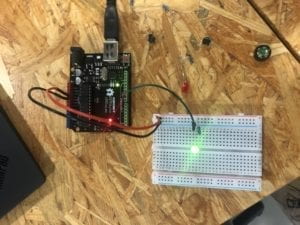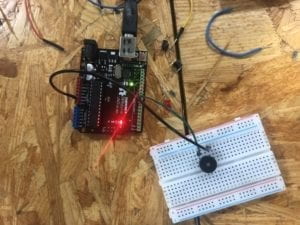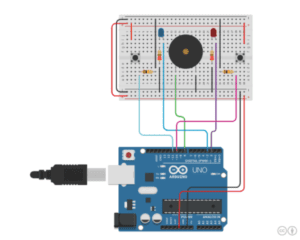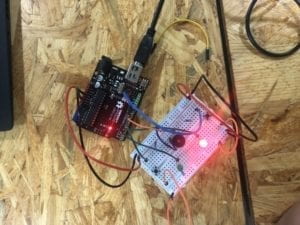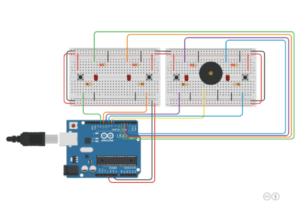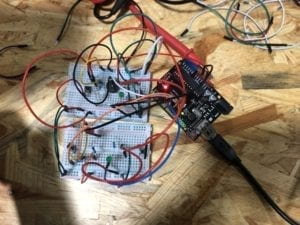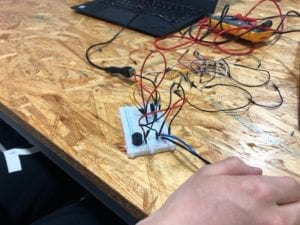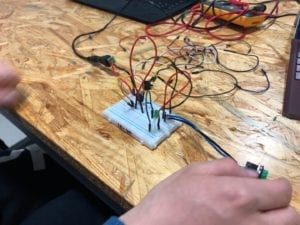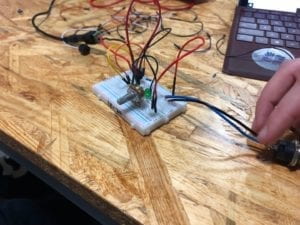In today’s recitation, my partner, Jessica, and I chose the Vibration sensor to play sound from a buzzer. We ran into some difficulties in coding, but with the help from fellows we made it through.
diagrams:
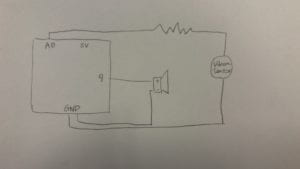
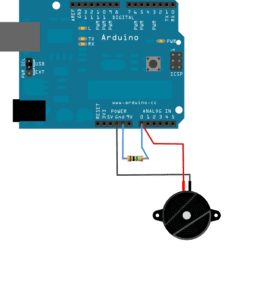
code:
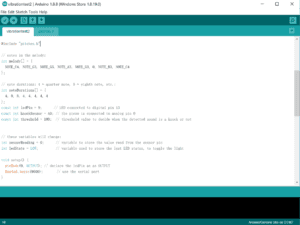
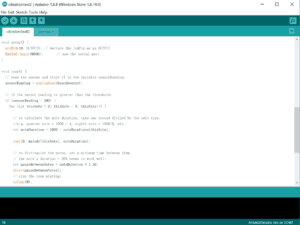
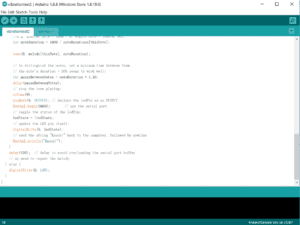
We ran into some difficulties with code: initially, the speaker would not make noise. So we added the code for ToneMelody from recitation 2 into the code, but it still would not work, since it didn’t repeat. With the help from a fellow, we finally saw the code Knock, and set the sensor value as cont int threshold = 100. So using an if else statement, we set the SensorValue to be >100 so the Knock Sound would be registered.
Q1:
We tried to build a sensor that makes a sound when it sensors a simple movement. It is quite common in daily life that you may find the extension of this circuit in alarms, annunciator etc. A vibration sensor could be used in protecting properties, or interactive games with toddlers. I would argue the gloves that translate sign language into sound could also be an extension of this vibration sensor.
Q2:
Code is often compared to following a recipe or tutorial. However, I would argue, in the case of Arduino, codes are actually more rigid and fixed that a recipe or tutorial. The code has to rigidly inputted in a manner that the computer understands, and in the case of Arduino, it seems difficult for computers to adjust to changing circumstances as the human does. However, in general, code is quite similar to recipe or tutorial in instructing a behavior, but it allows less room for interactivities but more for just rigidly translating.
I truly wish one day, a coding language would be as easy as instructing a person to do something with development artificial intelligence.
Q3:
Going back to the earlier classes on computers and interactivities, I would argue the computer influence people in ways of interacting with each other a lot. Before the age of the computer, individuals are less likely to interact with each other remotely. Face to face interaction could happen from all different forms of senses, but remotely through computer people are restricted in ways computers are capable of delivering human messages. People now are more used to interact with emails, text messages, and video callings than before. The sense of interactivity is not limited to face to face anymore but the way people interact with each other is to a certain extent defined by the capacity of computers at the same time.
